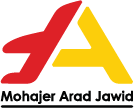You may want to invest in construction accounting software made specifically to support managing construction finances. Job costing is a detailed record of all the costs and income related to each construction job. That means tracking and recording everything from billing to purchase orders to quantity totals. We’ll also offer a comprehensive guide to successful construction accounting, including the three areas to focus on to help you grow and run a successful construction business. Unfortunately, this becomes so commonplace that even once the business is established and successful, expenses are still paid out of a personal bank account.
Try Remote Books Online for FREE!
Conversely, the accrual basis method recognizes revenue at the moment it’s earned and recognizes expenses at the moment they’re incurred. Of those, the four types of accounting described below are most relevant for construction companies. Tracking these costs separately helps bookkeepers identify discrepancies early and maintain control over the budget. These reports help identify potential cost overruns, underbilling issues, and overall project profitability. This will make it easy for you to send invoices online, track expenses, monitor payment status, generate financial reports, and more. You can use construction invoice templates to bill your clients and keep a paper record of all construction projects and revenue generated.
See profit at a glance
It is a way to forecast a project’s costs by estimating things such as contractors, materials and supplies, and overhead. It is why it is best to use software suited to job costing for construction projects. Contractors often work on and manage multiple projects at once – all of which are in different stages of progress.
Softwares we work with
- Revenue recognition is how a a business determines when they’ve officially earned revenue from a contract or project.
- Construction accounting is unique, employing the percentage-of-completion method, which recognizes revenues and expenses based on the progress of construction projects.
- Reconciling your bank accounts protects you from costly errors, mistakes and even fraud.
- Accounts payable reports explain who you owe money to, such as suppliers and other third parties.
- Unlike traditional accounting methods, accounting for construction focuses on project-based financial management, often dealing with long-term contracts and variable costs.
- The two most common methods for tracking expenses and revenue are cash-basis accounting and accrual-basis accounting.
- This scheme requires contractors to deduct taxes from subcontractor pay and pass it on to HMRC.
The Percentage of Completion Method (PCM) that are used to recognize revenues, expenses, and taxes over the life of the construction contract based on its completion percentage. For example, if the contract is 50% complete then the contractor will recognize half of the revenues, costs, and income. Contractors must track and report compliance with employment regulations, including federal, state, and local requirements. For instance, OSHA mandates reporting work-related deaths and injuries, while the EEOC requires employers with over 100 employees to submit annual reports on ethnicity, race, and gender data. Compliant timesheets aid in spotting injury trends, enabling internal policy improvements.
Implement a system for tracking inventory levels and reordering supplies as needed. Also account for equipment depreciation and maintenance costs to ensure accurate financial reporting. Construction companies have unique accounting needs that require specialized bookkeeping practices. This section will cover the fundamentals of bookkeeping for construction companies, including accounting methods, chart of accounts, and job costing essentials.
- It involves tracking hours worked, calculating wages, managing benefits, and ensuring proper tax withholding and reporting.
- It will take you some time to get comfortable with bookkeeping and to do it well.
- You also work with various contractors on any given job, and they’re probably also employed on other companies’ projects.
- Additionally, they will ensure that the construction company complies with all regulations.
- These reports are crucial for managing project profitability and overall business performance.
- When choosing the right accounting method, you should consider your business’s unique needs and objectives.
Businesses that work in other provinces or even in the U.S. have additional costs to consider, such as tax payments. However, the more projects you have on the go and the more people that work for you, the more you need to have a reliable bookkeeping process. Handling your own accounting and bookkeeping is doable but it’s time-consuming and requires https://digitaledge.org/the-role-of-construction-bookkeeping-in-improving-business-efficiency/ a deep understanding of bookkeeping rules in the construction industry. We advise on better financial recordkeeping, suggest ways to improve payroll management, and even help you identify opportunities for growth. Long-term contracts are a common aspect of construction companies, shaping their financial landscape and project execution.
Project-base work
- Making Tax Digital (MTD) is an initiative first introduced in 2019 to make taxes and manage finances easier and more efficient.
- Invest in specialized construction accounting software to streamline processes, automate payroll, improve accuracy, and save time.
- An overly broad direction in the original plan, a change in desired aesthetic or a need to control costs can stall a job.
- One effective way to track expenses is to use accounting software specifically designed for construction companies.
Generally, contract retainage is specified in the contract and is a percentage, typically five to 10 percent, of the total contract amount. Essentially, this ASU improves disclosure requirements, prompting more useful information out of financial statements. The FASB put it in place to ensure companies provide more transparency into how they recognize their revenues. This method is beneficial for ongoing projects that require tracking individual stages of work. It’s helpful when you need to keep an accurate record of your progress and give stakeholders an idea of what to expect in the future. It places the responsibility of paying the VAT to HMRC on the consumer instead of the supplier.

